
Historic Districts Could Help Palo Alto Eichlers
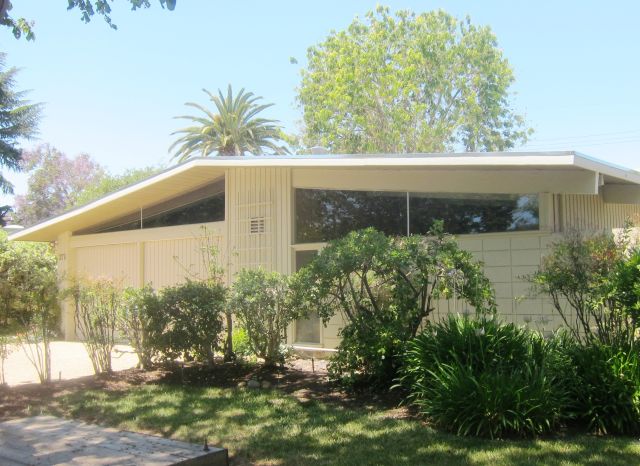 |
|
|
In their fight to preserve neighborhoods from teardowns and inappropriate changes, several Eichler neighborhoods in Palo Alto have focused on regulations that would prevent second-story additions. But so far at least, another avenue has been largely ignored – seeking local historic designation.
Palo Alto currently has two city-designated historic districts. Why couldn’t an Eichler neighborhood be the third?
“Planning staff is occasionally contacted by members of the general public with questions about historic-district designation,” says Matt Weintraub, a planner with a focus on historic resources in the city’s planning and community development department.
“In the past, some of the inquiries have come from homeowners in Eichler neighborhoods. None of the persons who have recently inquired have followed up with additional inquiries, expressions of interest, or actual designation proposals.”
“Most recently, the inquiries we’ve been receiving have been about seeking designation as a single-story overlay district, rather than an historic district.”
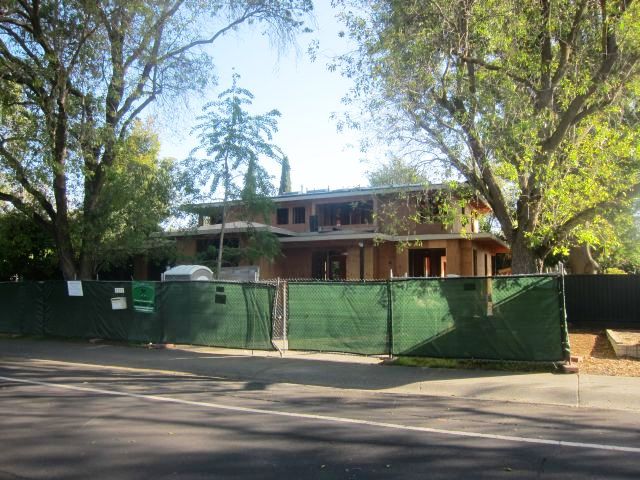 |
|
|
“City staff does not know if any community members are currently planning to nominate historic districts,” he says. “There are currently three neighborhoods that have submitted active applications for designation as single-story overlay districts, all of which happen to be Eichler neighborhoods: Los Arboles, Greer Park North, and Royal Manor. In addition, city staff has been contacted by homeowners in three other Eichler neighborhoods who are considering submitting [overlay] applications: Greenmeadow, Fairmeadow, and Faircourt.”
Weintraub, responding to questions from the Eichler Network, provided information about the historic district strategy in the dispassionate tones of a city planner, for informational purposes and not as an advocate.
But it seems that the historic route has advantages over single-story overlays in at least two respects.
One, while the overlay would protect against taller structures, but not against other changes to the facades of a home, establishing a historic district could do that as well – if such a district were to include design guidelines.
Two, the process might not be as cumbersome to establish a historic district – at least in terms of gaining neighborhood consensus.
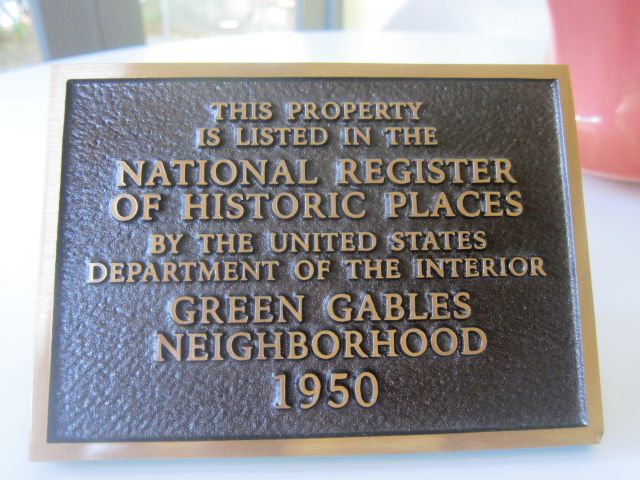 |
|
|
To create a historic district, neighbors must submit “a description detailing the district’s special aesthetic, cultural, architectural, or engineering interest or value of a historic nature,” Weintraub says. “There are no specified minimum requirements for owner approval” of the district, he adds.
“The process involves public hearings at the Historic Resources Board, which makes a recommendation, and the City Council, which makes the final decision. Since district nominations do not occur frequently, the fee is not specified. The fee for a major historic project [$3,128] would probably apply.”
In one way, though, establishing a historic district could be harder than winning an overlay. It would require a lot of research and writing on the part of the applicants to prepare a document establishing the historic value of the proposed local historic district.
To date, neither of Palo Alto's historic districts are in any way modern. Professorville is a largely residential district mostly of distinguished Period Revival homes. The Ramona Street district covers a downtown commercial area filled with delightful examples of Spanish-tinged exotica.
The city’s Historic Resources Board is currently developing design guidelines for Professorville “to ensure compatibility of new construction with the district." These "would address additions and remodels as well as new homes.” The guidelines have been in the works for some time – since 2011.
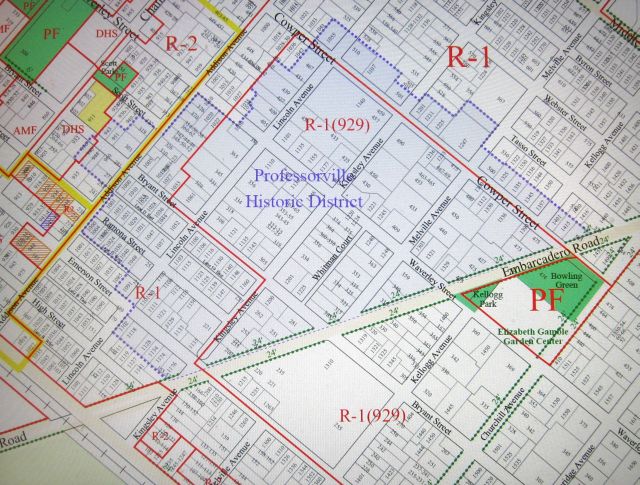 |
|
|
Weintraub notes that a neighborhood could seek protection through design guidelines even if it is not a historic district.
“Design guidelines are not required to be developed for historic districts,” Weintraub says, “nor is historic district designation required in order to develop and adopt design guidelines. Typically, design guidelines are prepared by cities in coordination with property owners and the broader community, and usually as a result of a request by community members.”
He adds: “There are many examples of design guidelines adopted by cities for areas that are not historic districts. Property owners [as well as other stakeholders] who are interested in developing design guidelines may contact city planning staff to discuss the possibilities. Community members may also express interest to decision-makers during the public comment period at public hearings.”
Being designed as a historic district would provide a degree of protection even if no specific design guidelines are developed.
Weintraub explains: “If an area is designated as a historic district [at the local, state, or federal level], a...project that could adversely affect the district and/or its contributors would be subject to review according to the California Environmental Quality Act.”
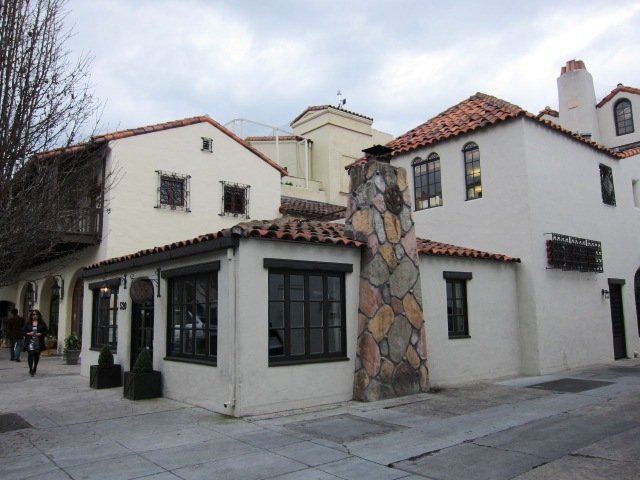 |
|
|
“The CEQA review process involves analyzing the potential impacts, identifying and applying mitigation measures that could reduce the potential impacts, and disclosing this information to decision-makers and the general public before a final decision is made.”
“Furthermore, if a district is designated at the local level, building permits for exterior changes within the district are subject to Historic Resources Board review and comment prior to issuance.” Similar review is provided for neighborhoods that have state or federal historic designation.
Palo Alto already has two Eichler neighborhoods that have historic designations. Both Greenmeadow and Green Gables are on the National Register of Historic Places. Residents at Greenmeadow have attributed their neighborhood’s success at staving off development pressure, however, to the single-story overlay in place there, not to their being on the Register.
- ‹ previous
- 303 of 677
- next ›



